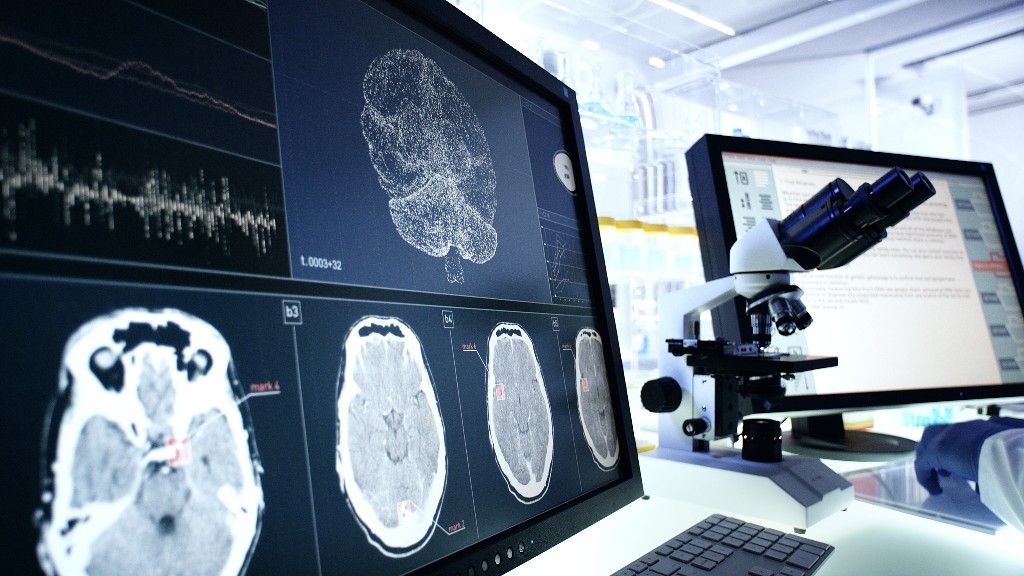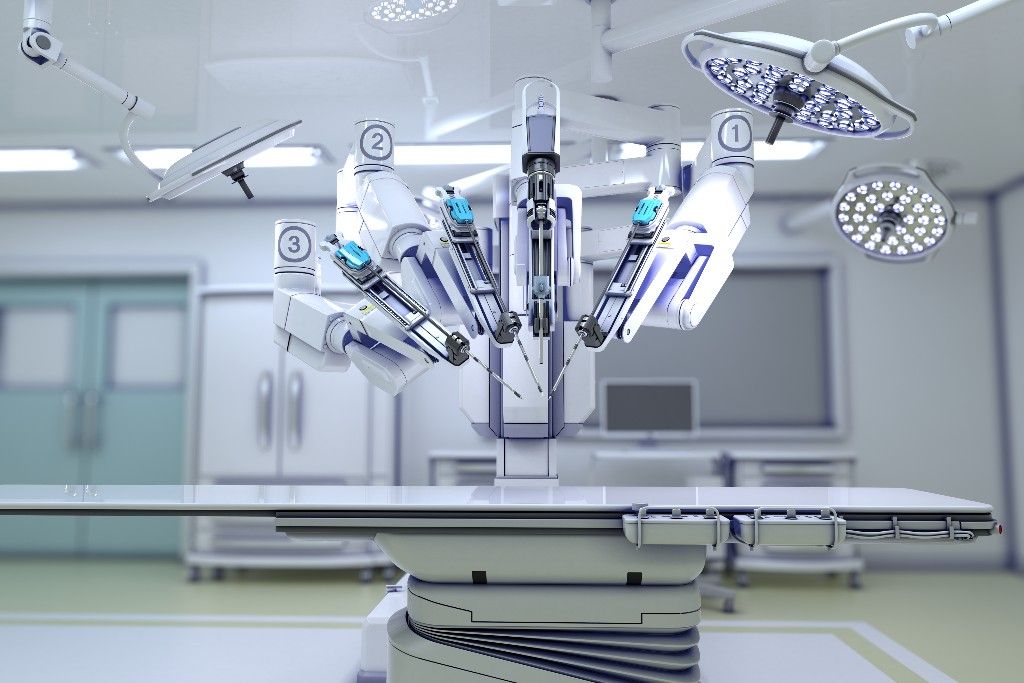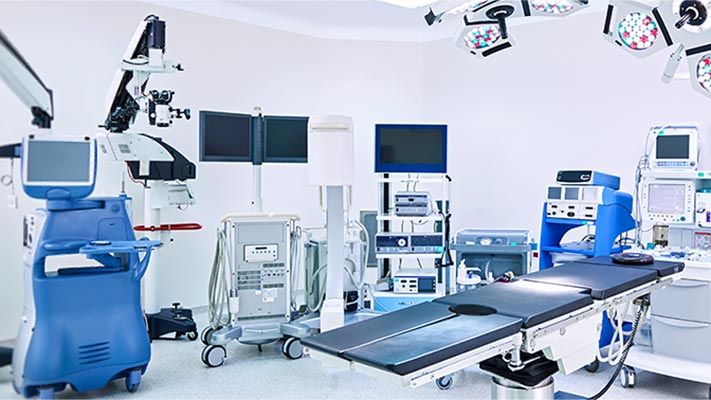医療AIとは?
医療AIは、医療データへのAI技術の適用によって、医療の質を向上させ、効率を高める取り組みです。
医療AIの活用は、AI技術先進国であるアメリカでは急速に広まっています。事実、日本の厚生労働省にあたるアメリカ食品医薬品局(FDA)で認可されているAI/機械学習対応の医療機器の件数は年々増加傾向にあります。日本においても、アメリカ同様にAIを活用した医療機器開発の普及はますます進んでいくと予想されています。
医療AIの活用例
- 画像診断:X線画像、CT画像、MRI画像に対し、ディープラーニングなどの画像認識技術を適用することで、診断の精度を高めるとともに、診断にかかる時間を短縮できます。
- 電子健康記録(EHR)のデータ分析:カルテに記載された患者の記録をAIで解析し、その患者の疾患のリスクを予測したり、パーソナライズされた治療計画を提案することが可能です。
- 患者のモニタリング:種々のセンサから記録された患者のデータにAI技術を適用し、患者の健康状態をリアルタイムで監視し、リスクがあると診断されたタイミングで素早く介入できます。患者モニタリング技術の活用場面例として、手術後の状態管理、高齢者の見守り、遠隔地での診断が挙げられます。
- 手術支援:ロボット技術により、繊細な動きを正確に実現して高い精度かつ低い侵襲度で手術を行うことができます。
医療AIに取り組むべき理由と課題
医療AIの導入は、医療の現場に様々なメリットをもたらします。
診断の精度と速度の向上:例えば読影において医療AIを用いることで、医用画像(例:X線、MRI、CTスキャン)から病変を検出し、診断を支援することができます。AIアルゴリズムは大量の画像データから学習し、微細な異常も見逃さず、診断の精度と速度を向上させます。医師をはじめとした医療従事者の働き方改革により、読影作業の効率化が求められていますが、医療AIはその解決策の1つとしても注目されています。
パーソナライズドメディシンの実現、治療計画の最適化:AIは患者の医療記録、遺伝子情報、ライフスタイルなどのデータを分析し、個々の患者に最適な治療計画を提案することができます。これにより、より個々の患者にとって効果的な治療が可能になります。
早期発見と予防:AIは大量のデータからパターンを認識し、特定の疾患のリスクを早期に識別することができます。これにより、予防策を講じたり、早期治療を開始したりすることが可能になり、疾患の進行を防ぐことができます。
新薬開発の加速:AIは新薬開発において、有望な化合物のスクリーニングや、臨床試験のデータ分析を支援します。これにより、開発期間とコストの削減につながり、より迅速に新しい治療法を患者に届けることができます。
医療アクセスの向上:AIを活用した遠隔医療やモバイルヘルスアプリは、地理的、経済的な制約により医療サービスの利用が困難な人々にも、高品質な医療サービスを提供することができます。
これらのメリットを通じて、医療AIが医療の質の向上、患者のアウトカムの改善、医療コストの削減に貢献することが期待されています。
その一方で、医療AI開発プロジェクトで陥りがちな失敗や、医療AIが持つ課題も無視できません。
学習時のデータの偏り:ディープラーニングをはじめとしたAI・機械学習では、開発者から与えられたトレーニングデータに基づいて学習します。使用されるデータが偏っている場合、そのAIは特定の集団に対して不正確な診断や推薦をする可能性があります。例えば、特定の人種や性別のデータが不足している場合、そのグループに対するAIのパフォーマンスが低下する可能性があります。
実装したアルゴリズムの展開:医療AI開発を行う際、研究場面での成果を臨床面で展開する必要があります。研究場面で用いられるソフトウェアや開発環境が、実機への実装や現場への展開に不向きであったり、展開に時間がかかる場合、AIを用いて効率化を行うはずが、かえって手間がかかってしまったり、プロジェクト自体が失敗に終わる例も見られます。
プライバシーとセキュリティの懸念:医療データには非常に個人的で敏感な情報を含まれます。医療AIの開発と使用により、これらの情報が不適切に取り扱われたり、外部に漏洩したりするリスクが高まります。
過信の問題:医療従事者がAIの判断を盲信してしまうと、患者様の状態に合わない治療を推奨する可能性があります。AIはあくまで支援ツールであり、最終的な判断は専門家が行う必要があります。特に、複雑な医療状況や希少疾患の診断においては人間の専門家に及ばない場合があります。さらに、深層学習など、大量のデータを使って学習させるデータドリブンのAIでは、AIが出した答えの解釈が難しい、また誤った結論を出した過程に気づきにくいという問題点があります。この場合、専門家が事前に定めた手順や計算を用いるなど、アルゴリズムベースのAIを活用することで、解釈の誤りを避けやすくなります。
MATLABによる医療AI開発
MATLAB, Simulinkを活用することで、先に挙げた医療AIにおける落とし穴やデメリットを避けながら、医療AI開発や展開を進めることができます。
豊富な可視化と分析ツール:MATLABは強力なビジュアライゼーション機能を備えており、アルゴリズムの出力や性能指標を直感的に理解するためのグラフやチャートを簡単に作成できます。これにより、アルゴリズムの振る舞いや性能を詳細に分析し、アルゴリズムの信頼性と汎用性を評価することができます。
アルゴリズム開発から実機・アプリ実装まで一機貫通のワークフロー:MATLABは、GPU、FPGA、およびその他のハードウェアアクセラレータとの連携が容易です。さらに、Simulinkと統合することで、アルゴリズムのシミュレーションやプロトタイピングを行うことができます。これにより、データやシステム上でのアルゴリズムの振る舞いを前もって試験し、評価したうえで、実際の運用まで展開することができます。
開発時間の短縮:MATLABにはすでに多くのアルゴリズムが実装されており、ソフトウェアの利用に際しても各種サポートを受けることができます。Vision Transformerなど、比較的新しく高い性能が期待できる手法・アルゴリズムもMATLABで利用可能です。また、MATLABとSimulinkを組み合わせることで、プロトタイピングとシミュレーションを効率的に行うことができます。実際のデバイスやシステムを使用する前に問題点を特定し、修正することができるため、物理的な試作品の作成にかかるコストを削減できます。これらの特徴を活かして開発を行うことで、短期間でAI技術の開発を行うことができます。
MATLABを活用した医療AIの開発事例
- 喘鳴検出および喘息管理のモバイル アプリとサーバー ソフトウェアを開発
Respiri社は、MATLAB、Simulinkを活用することで、AIを活用した音響処理アルゴリズムを迅速に開発・実機とWebサーバーに実装することで、コーディングとコード保守の労力削減・開発期間の短縮に成功しました。 - 血液型結果の解釈のために埋め込み型コンピュータービジョンと機械学習アルゴリズムを開発
IDNEO社は、MATLABを使って画像処理と機械学習のアルゴリズムの開発、テスト、実機実装を行い、効率的な開発を実現しました。 - わずか6週間で人工呼吸器を開発 (34:08)
ケンブリッジコンサルタンツ社は、コロナ禍でシミュレーションを活用し、6週間で人工呼吸器を完成させました。 - ディープラーニングとMATLABを活用したアルツハイマー病治療標的の評価
Genentech社は、MATLABによる画像解析で、スパイン密度計測の効率化を実現しました。
医療AIの開発に役立つリソース
参考: MATLAB and Simulink for Medical Devices, MATLAB for Image Processing and Computer Vision, dicom




